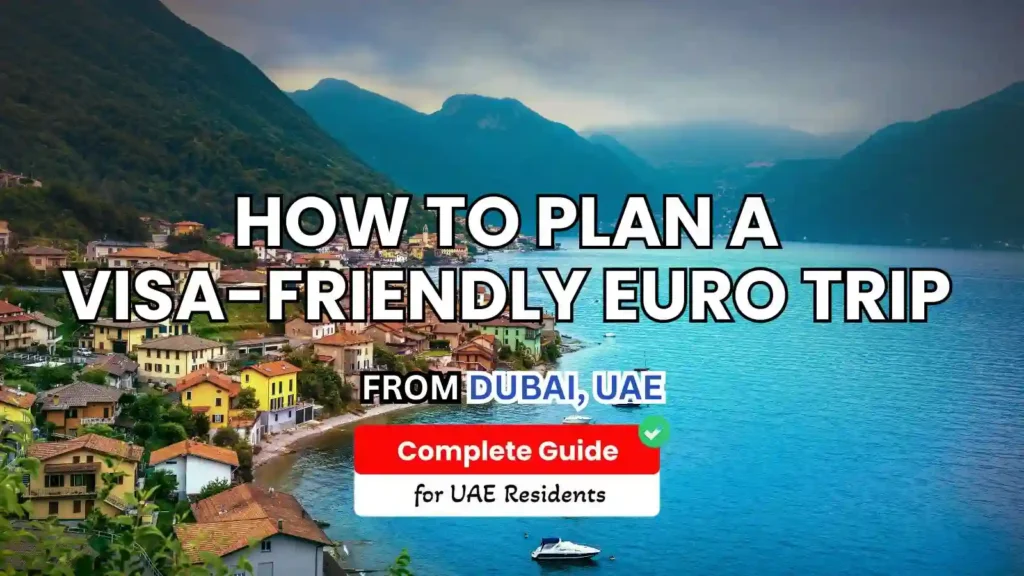
A Europe trip feels like opening a box of chocolates—you want to try everything, everywhere, all at once. The trick is to slow down for one hour, make a simple plan, and then enjoy the fun parts. For most UAE residents, the first step is the visa. If you get that right, the rest flows. I like to think of the visa as the key that opens many doors at once, so it’s worth giving it clean, careful attention.
Learn the visa basics
Most first-time routes use the Schengen visa. It lets you move through many European countries on one sticker, which is a relief. Countries like France, Italy, Spain, Germany, and the Netherlands are inside this zone, so you can hop around without new permits. A few places—like the UK or Ireland—have separate rules. If you plan to include them, treat those as extra steps. I always check official sites before I book, because rules can shift and it’s easier to adjust dates than to redo paperwork.
Choose your “anchor” country
Apply through the country where you’ll spend the most nights. That place becomes your anchor. If your nights are equal, apply where you enter first. It sounds minor, but it saves hassle at the counter. I usually sketch a calendar on one page and mark sleep nights by city. When the math is clear, the choice is easy.
Build a simple, believable itinerary
Your itinerary is more than a list; it’s your story on paper. Keep it logical. If you land in Paris, trains to Belgium, the Netherlands, or Germany make sense. If you start in Milan, Switzerland or the south of France is a smooth move. Mix big cities with a breath of nature so you don’t burn out. I write short notes for each day—morning museum, afternoon walk, evening train. It keeps me honest with time and helps the visa officer see a real plan instead of a wish.
Book flights and beds with intention
Flight prices shift with season and timing, so booking a few months ahead is usually kinder to your wallet. Direct flights are comfortable; good connections can be cheaper. For hotels, your visa file needs confirmed bookings. Even if you’ll tweak later, keep active reservations through the application stage. I save all confirmations as PDFs with clear names so I can find them in seconds.
Prepare documents that match each other
Visa files often fail because small details don’t match. Names, dates, and numbers must line up. You’ll likely need your application form, passport and UAE residence visa, photos, flight and hotel proofs, travel insurance, bank statements, and a cover letter. I keep everything in one folder—both printed and digital—and I read it once out loud. If it sounds confusing to me, it will confuse someone else.
Write a short, friendly cover letter
A cover letter makes your file feel human. Keep it simple: where you’ll go, why you chose those places, how you’ll pay, and that you’ll return to the UAE. One page is plenty. I use clear headings and short sentences. The aim is to answer the officer’s quiet questions before they ask them.
Time your application well
Appointment slots can vanish fast, so book as soon as your plan is stable. After you submit, processing can take a couple of weeks, sometimes more. I like to keep a buffer between “visa in hand” and “flight day.” It calms the mind and protects the budget, because last-minute changes are expensive.
Budget without killing the joy
Europe can be pricey, but a simple budget saves you from awkward choices. Set a daily range for food, transport, and fun. City passes, public transport cards, and advance museum tickets can trim costs. I also plan one or two “treat” meals and keep the rest casual—markets, bakeries, and small local spots. It feels balanced and still tasty.
Insurance and safety are not optional
Travel insurance is required for Schengen visas and helpful in real life. Make sure it covers medical care, emergencies, delays, and lost bags. Save the policy number and the 24/7 phone in your contacts. Europe is generally safe, but pickpockets love crowds. I keep my passport in the hotel safe, carry a copy, and use a cross-body bag in busy areas. Boring habits, big payoffs.
Move like a local
Trains are the sweet spot for many routes—fast, scenic, and city-center to city-center. Book high-speed lines ahead for good prices. Buses are cheaper and fine for short hops. Budget airlines work for longer jumps, but watch baggage rules. I always download offline maps and tickets to my phone so poor signal can’t ruin a morning.
Keep money simple and smart
I bring two cards from different networks and store them in different places. I pay in local currency to avoid bad conversion rates. For cash, I withdraw from bank ATMs inside stations or malls. I note my bank’s international hotline and turn on spend alerts. These tiny steps stop small problems from becoming big ones.
Pack light, breathe easier
Europe rewards light bags—stairs, cobbles, and small hotel lifts are real. Choose layers, comfortable shoes, and a light rain shell. I roll clothes, use packing cubes, and leave a bit of space for that cheese, scarf, or book that insists on coming home.
Make your file look “yes-ready”
When you attend your appointment, present a neat file. Documents in the order the checklist asks for. Originals and copies. Calm answers. If asked about ties to the UAE, point to your job letter, lease, or family commitments. The goal is to make “yes” feel easy and safe for the person across the desk.
Enjoy what you planned
Once the visa is approved and flights are set, shift from paperwork mode to curiosity mode. Learn a few basic phrases. Try a dish you can’t pronounce. Wander one block past the obvious sight—you’ll often find a quieter café and a better view. I like to build one “empty” afternoon into every city, just to follow my feet. It keeps the trip alive rather than over-scheduled.
Final note
A visa-friendly Euro trip from Dubai isn’t complicated when you put the steps in the right order: choose your anchor country, design a logical route, prepare clean documents, apply early, and give yourself room to breathe. Do that, and Europe opens up the way it should—trains on time, plates full, small surprises at every corner, and a passport stamp that feels like a promise kept.
